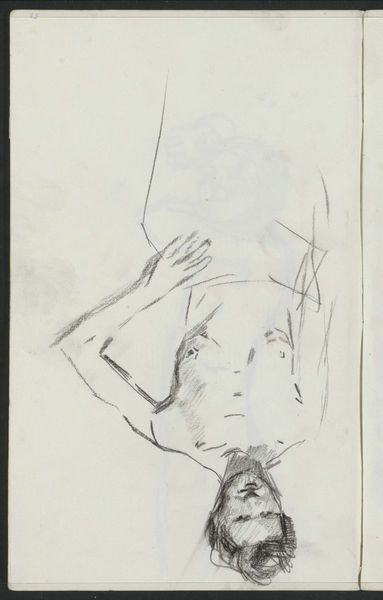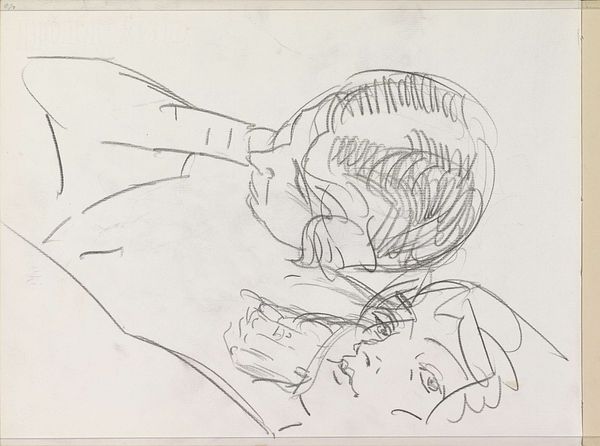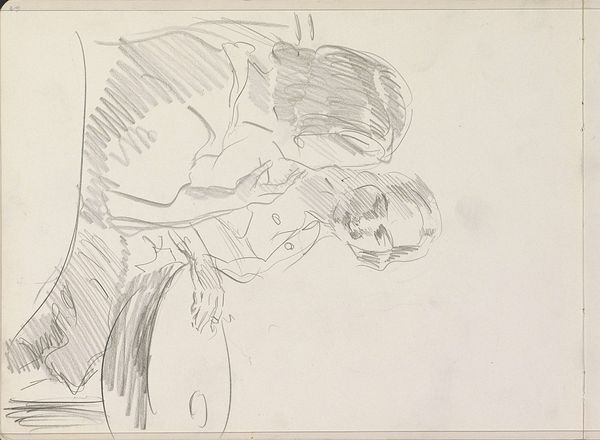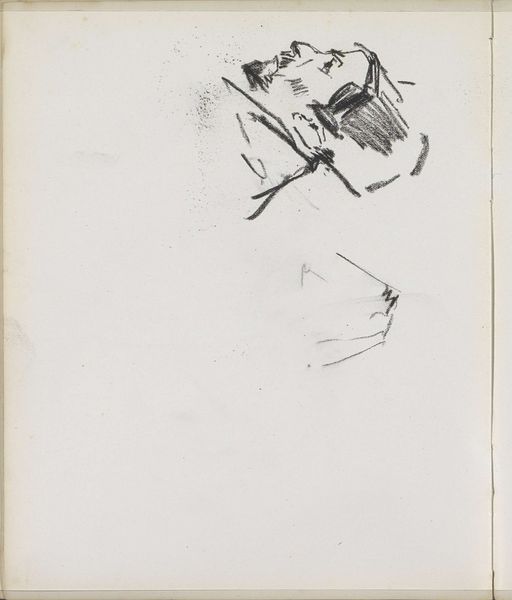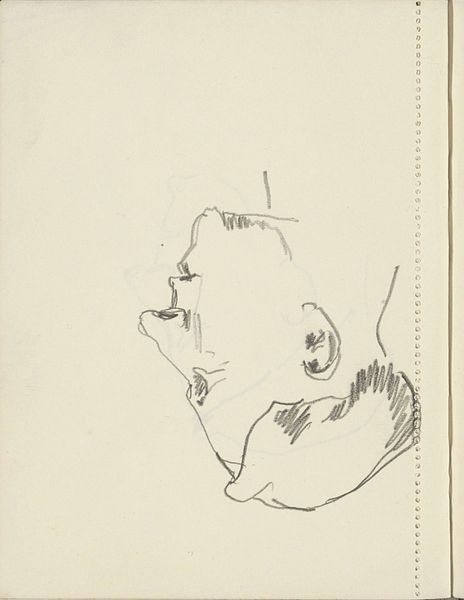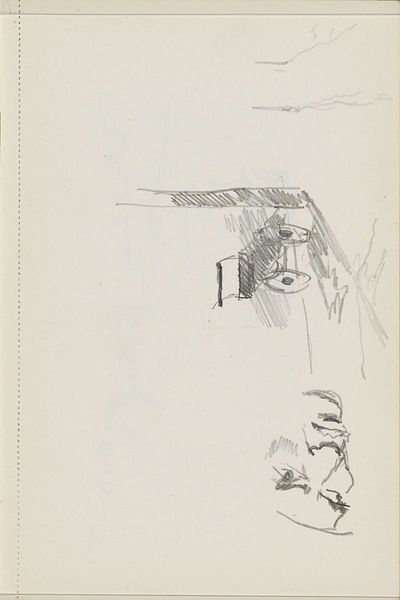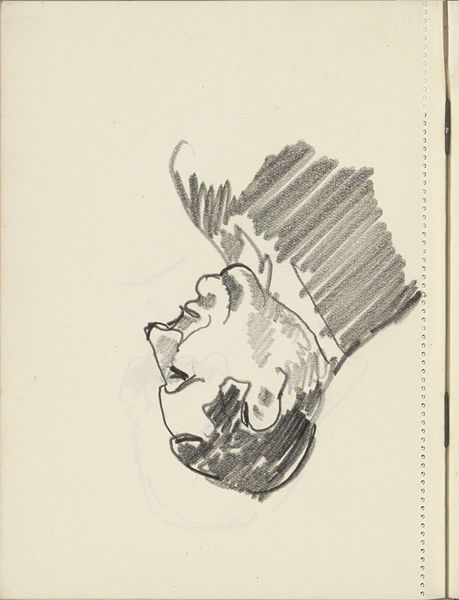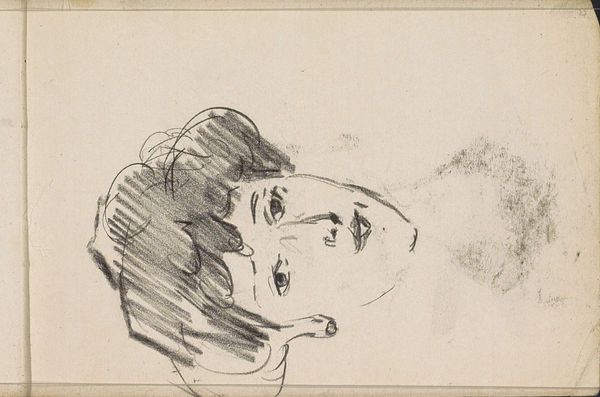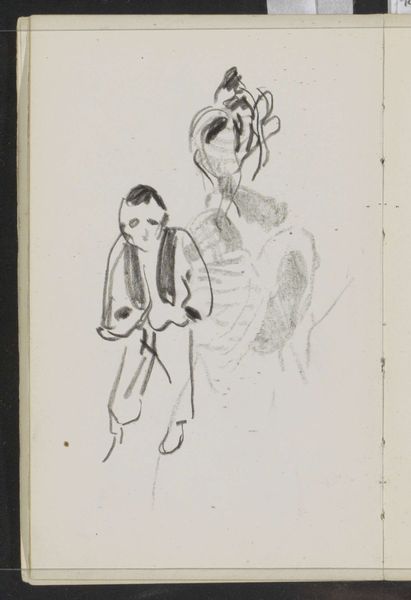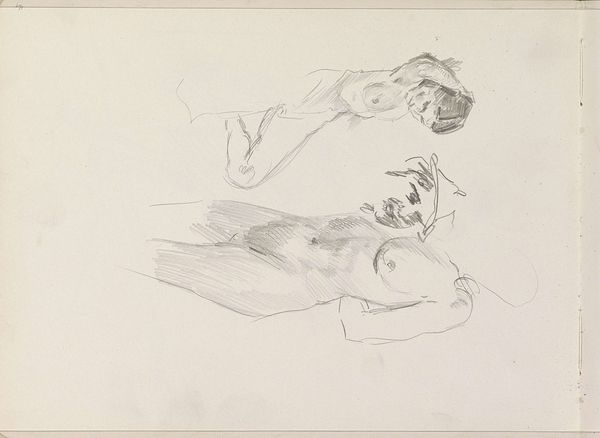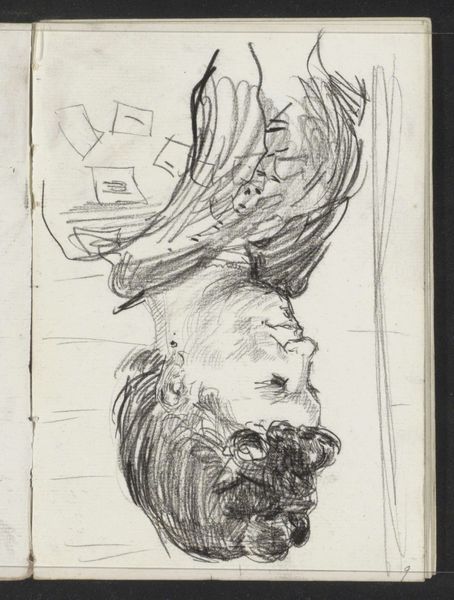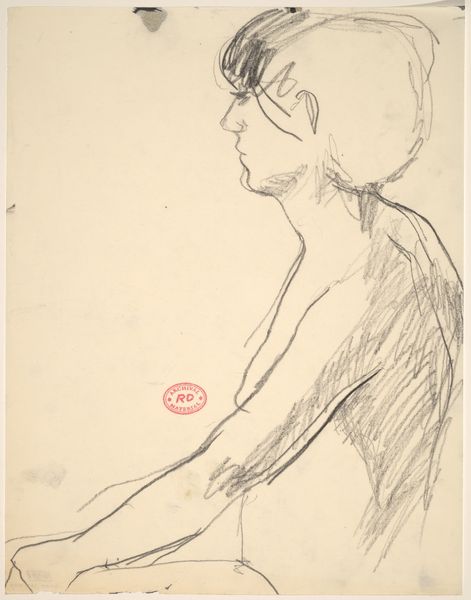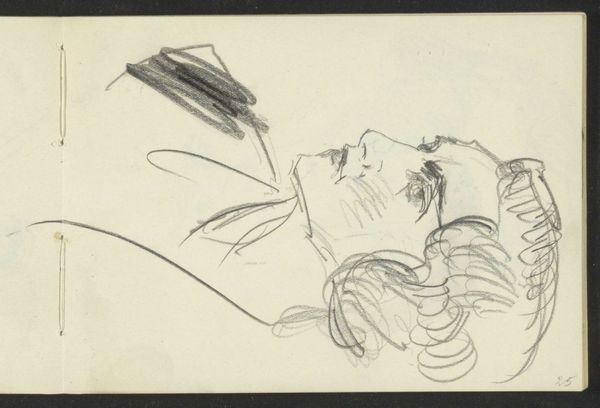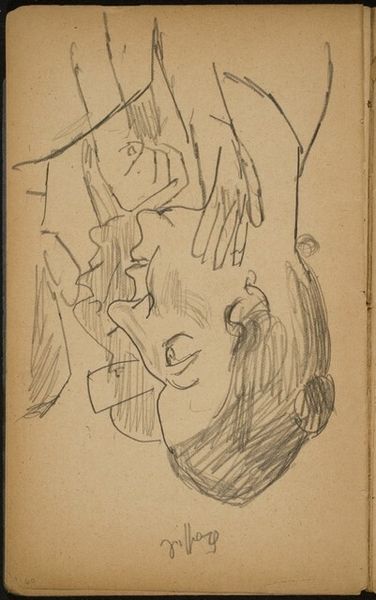
Jongen met een deken om zich heen geslagen en een hoofd van een kind c. 1922 - 1925
0:00
0:00
drawing, ink
#
portrait
#
drawing
#
imaginative character sketch
#
light pencil work
#
quirky sketch
#
pencil sketch
#
figuration
#
personal sketchbook
#
ink
#
idea generation sketch
#
character sketch
#
ink drawing experimentation
#
expressionism
#
sketchbook drawing
#
sketchbook art
#
modernism
#
realism
Copyright: Rijks Museum: Open Domain
Editor: This is "Jongen met een deken om zich heen geslagen en een hoofd van een kind" which roughly translates to "Boy with a blanket around him and a head of a child," a drawing in ink and pencil by Otto Verhagen, created sometime between 1922 and 1925. There's something really vulnerable about it, like the artist is capturing a fleeting moment of childhood fragility. How do you interpret this work? Curator: I see in this sketch Verhagen grappling with notions of innocence and societal vulnerability, especially potent themes during the interwar period. Consider the social upheavals of that time: how do you think widespread poverty, loss, and disillusionment shaped perceptions of childhood, and how might that be reflected here? Editor: I hadn't thought about it in that context, but that makes sense. The child looks so small and unprotected, almost lost in the oversized blanket. Could this also be seen as a commentary on the safety, or lack thereof, provided to children during such turbulent times? Curator: Precisely. The loose, expressive lines evoke a sense of unease, suggesting a world where traditional structures of support have crumbled. Verhagen uses the child's figure as a vessel to hold broader anxieties about the future and the security of the next generation. What if the "blanket" is the failing protection from war for a generation? Editor: So it’s not just a simple portrait; it’s a reflection on the anxieties of a specific historical moment. Curator: Absolutely. And by focusing on the vulnerable child, Verhagen amplifies those anxieties, inviting viewers to confront uncomfortable truths about their society. Editor: I definitely see that now. Looking at the work again, I feel a greater sense of the social commentary within this drawing. Curator: And that's the beauty of engaging with art in context, isn't it? It reveals the powerful dialogues art can have with the world around it.
Comments
No comments
Be the first to comment and join the conversation on the ultimate creative platform.
